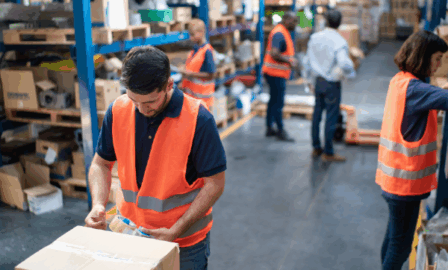Commodity Mapping for Assessing Supply Chain Risks
Supply chain traceability for food companies is becoming necessary to meet regulation standards and appease consumers. Consumers expect food companies to be transparent about their supply chain, as well as the social and environmental impacts of their products. Visibility to the global supply chain is also critical for business operations, identifying product availability risks and changing costs of key resources. But for many US food companies, traceability and public transparency seem out of reach due to the lack of visibility to their global supply chains, especially around commodity sourcing.
Many food manufacturers in the US have very little visibility to or communication with international suppliers of commodities due to language barriers, differences in technologies and the aggregation of commodities abroad. However, the US government and food industry are putting measures in place to ensure the domestic food supply is safe and correctly labeled. Initiatives like the Produce Traceability Initiative and the recent rules from the Food Safety Modernization Act are positive steps to identifying risks associated with commodity sources. Although international visibility can appear to be an insurmountable obstacle, those companies that take steps to identify supply chain risks early and often will protect their brand promise and avoid adulterated supply and volatile commodity costs.
One approach to tracking commodities is through commodity mapping, or geographic visualization of all commodity sources. It is a method of taking geographic inventory of purchased commodities considering environmental and social conditions of the places from where the commodities are being sourced. Taking a geographic approach to viewing commodity sourcing allows visibility into the global supply chain even with limited supply chain data. Geographic maps with global production and supply overlaid with other information, such as social or environmental information, can help to identify commodity risks and opportunities. Visualization of factors such as social unrest, water scarcity, and weather events can give insight into programs that need to be started or reduced dependency on a particular region or commodity. For example, MillerCoors assessed hot spots on their commodity map that uncovered a risk to long-term coconut oil availability. To mitigate the risk, they initiated educational programs on sustainable farming with farmers in those areas.
With much of the supply chain sustainability risks coming from the growing and farming portion of the product lifecycle, it is imperative that downstream supply chain players become more aware of the total impacts of their products. Regardless of a company’s maturity in the sustainability and traceability space, commodity mapping is a great place to start moving the sustainability conversation outside of a company’s four walls.


